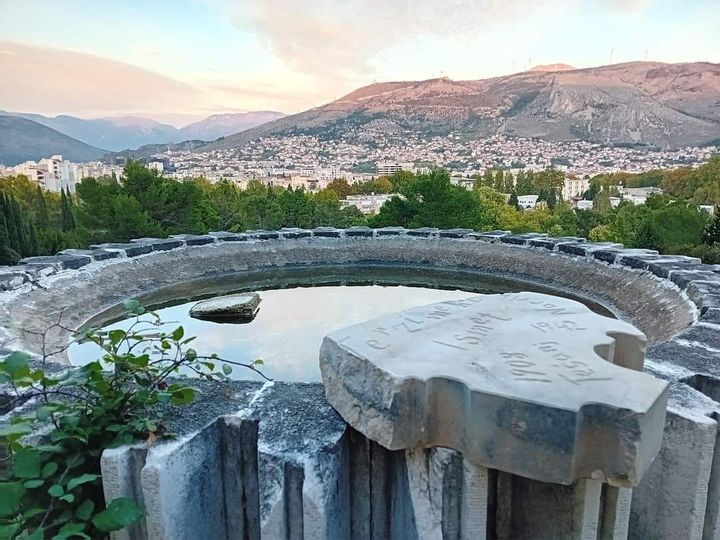
brochure "Partizanski spomenik u Mostaru" (1980)
another document or proof of the memorial stone (e.g., a photograph).
Ismet TERZIMEHIĆ
ISMET TERZIMEHIĆ, judge, according to some sources, originally from Maglaj. He completed primary school in Maglaj, secondary school in Sarajevo, and studied law at the Faculty of Law in Belgrade. A member of the Communist Party of Yugoslavia (KPJ) and an activist in the People’s Liberation War (NOR), he operated underground. He frequently traveled to Tuzla to attend meetings with members of the Regional Committee for the Tuzla region to coordinate party-political work. He was described as a “prominent party-political worker entrusted by the Regional Committee of the KPJ for the Tuzla region with party-political work in Gradačac.” As a judge at the district courts in Mostar and Gradačac, he left a significant impact by providing assistance to the persecuted. In Mostar, he was active in the Muslim People’s Library and served as a member of its board of directors. In Visoko, he was a member of the Local Committee of the KPJ. This committee was formed shortly after Terzimehić was transferred to Visoko and operated from October 1941 to April 1942. The committee “regularly held its meetings and its main task was to provide written reports to the detachment about the movement of Ustasha units and individuals, and the internment of Serbian population in camps…”
Terzimehić was arrested in Sarajevo and deported to the Jasenovac camp. He was executed in Stara Gradiška likely in 1944*.
From the memoirs of Remzija Duranović (article “Mostar Residents in the Konjic Battalion”):
“The war found me in prison. Luckily, Kunšek frequently changed his statements. He was very confused. One time he said I had given him leaflets from the drawer of his desk, another time it was something else. Thanks to the kindness of Judge Terzimehić, who took advantage of Kunšek’s changing statements, I saved my life. He told me: ‘We know you’re the culprit, but go home. We’ll see each other after the war.’ Terzimehić was one of us, a candidate for Party membership.”
grupa autora (1986): Hercegovina u NOB 4. dio, Beograd https://maglaj.net/ba/vijesti.php?id=12923; https://www.ushmm.org/online/hsv/person_view.php?PersonId=7511306 ; https://porodica-kurt.com/spisak-bosnjaka-708/ ; https://www.cidom.org/wp-content/uploads/2016/10/Ahmet-Kurt-Spisak-bo%C5%A1njaka-koji-su-1938-godine-imali-akademko-obrazovanje.pdf ; Čanković, Miodrag: Mreža partijskih rukovodstava u tuzlanskoj oblasti pred početak ustanka i u istočnoj Bosni krajem 1941. godine (rekonstrukcija), str 264.; Tihić, Esad (1983): Posavsko-trebavski NOP odred, Beograd; Spaho, Muhamed, urednik (2002): Edicija Naroda Općine Visoko u NOP-NOV Jugoslavije od 1941. g. do 1945. godine, „Predsjedništvo Udruženja boraca NOAR-a Visoko“, Visoko; Muratbegović, Midhat (2013): Fragmenti iz sjećanja na neke događaje i političku aktivnost u srezu i mjestu Gračanici u period od kraja 1939. do početka jula 1941.“, Gračanički glasnik 26, str 81; Ljubo Gordić, Refik Hamzić: „Partizanski doktor Safet Mujić“; Halilbegović, Nihad (2006): Bošnjaci u jasenovačkom logoru, Sarajevo
Photo of the memorial plaque: S. Demirović.
Note: Although it is stated on his memorial plaque that he perished in Norway, the Museum of War and Peace in Narvik, Norway has no information about Ismet Terzimehić. On the other hand, a number of sources, including the Victims of the Holocaust website, state that Ismet Terzimehić was killed in the Jasenovac/Stara Gradiška complex in 1945.
Do you have more information about this fighter? Share your stories and photographs. Let's keep the memory alive!






